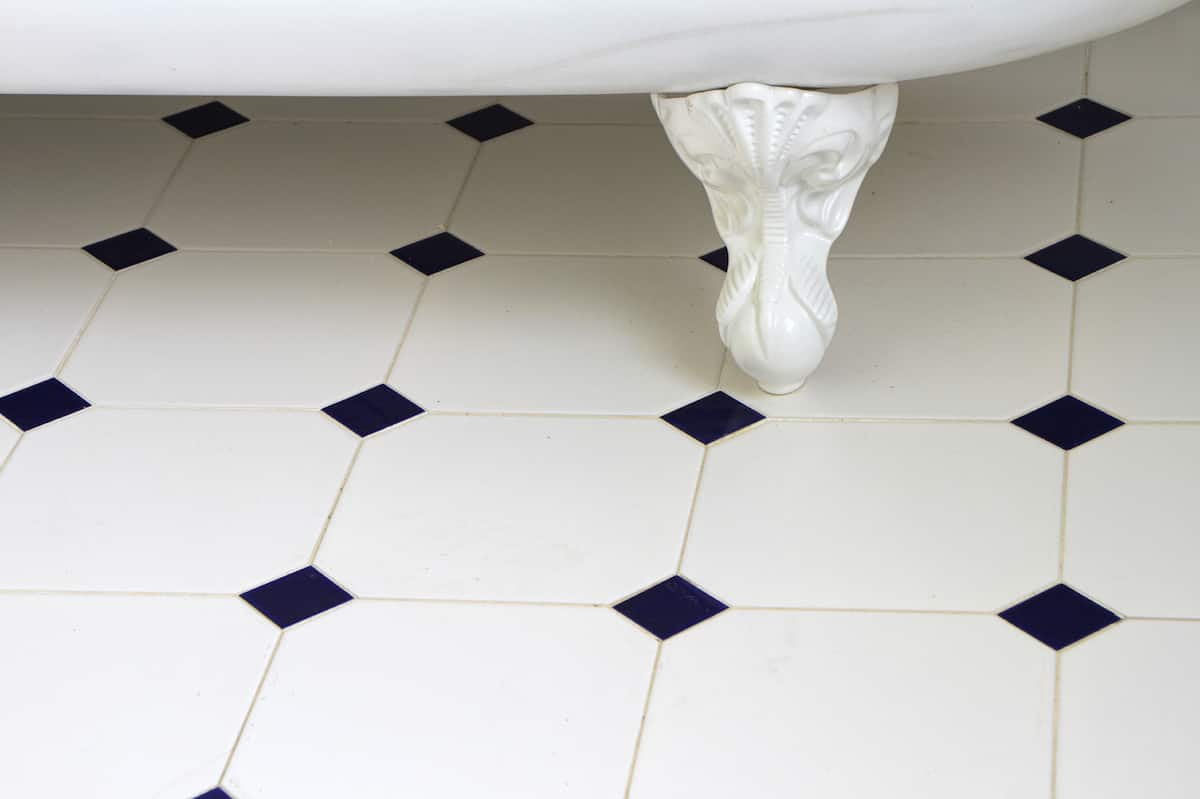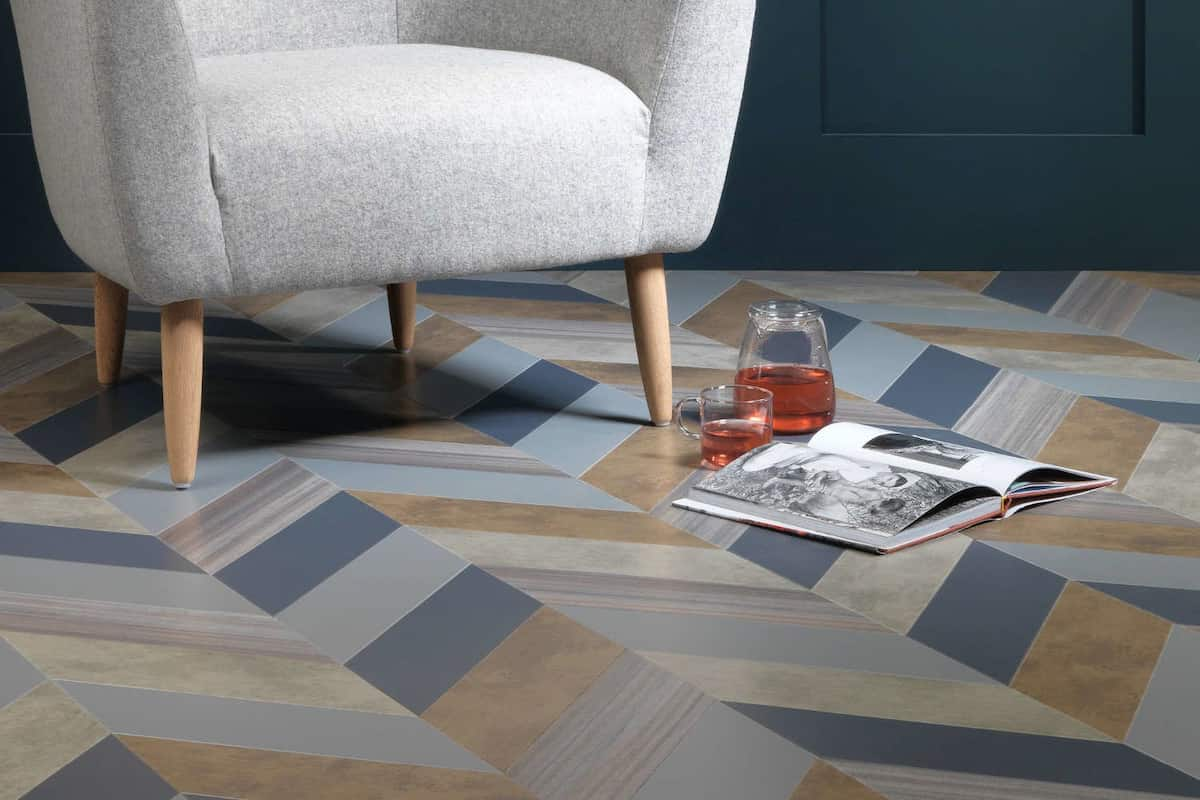In addition to natural stone and hardwood, quality vinyl and ceramic tiles are two of the most common materials for the floor.
In addition to being highly stain-resistant, these alternatives are also good at avoiding moisture buildup, making them a perfect option for bathroom and kitchen renovation projects.
When it comes to tiling, ceramic tiles are also quite easy to clean compared to other floor surfaces. Despite the fact that these two options may look comparable, especially given that vinyl tiles are designed to imitate ceramic flooring, they are actually quite unlike.
These two flooring options differ substantially in appearance, cost, maintenance, and installation. Below is a comprehensive comparison of ceramic and vinyl tiles to aid you in selecting the finest flooring material for your home.
Defining Ceramic vs. Vinyl Tiles
Vinyl is a synthetic material developed by combining two common forms of reinforced plastic. Standard and premium vinyl tiles are the two most prevalent variants. The former consists of thin, water-, stain-, and scratch-resistant tiles that are adhered using a sealant known as mastic.
The latter utilizes larger, more durable plastic tiles that are fitted more quickly and readily since they interlock at the edges as opposed to being bonded. Ceramic/porcelain tiles are manufactured from glazed natural earth tiles that have undergone a high-temperature hardening process and are recognized for their extreme resilience.

Ceramic versus Vinyl Tiles: Visual Variations
Vinyl floor tiles are designed to appear ceramic. However, because these two alternatives are not identical, virtually everyone can discern the distinction between them. Superior quality luxury vinyl tiles closely mimic ceramic. In light of this, it is also essential to remember that vinyl tiles are available in a wide variety of colors and designs.
In other words, homeowners are able to swiftly and simply select an item that matches their aesthetic preferences.
In addition, there are several color and style options for ceramic tiles. If you’re willing to spend a bit extra, you may even get designer ceramic tiles.
Ceramic vs. Vinyl Tiles Cost
Generally, vinyl tiles are less costly than ceramic tiles. In addition, because laying vinyl tile is so simple, homeowners may do so without the assistance of professional installers. In contrast, ceramic tiles are more costly.
Ceramic floors are difficult to install, therefore hiring a professional installer increases the cost of installing them. Vinyl flooring does not need any hacking.
Nevertheless, there is always a rationale for higher pricing, which is why tiles continue to be chosen in several applications.

Ceramic vs. Vinyl Tiles: Maintenance
Both ceramic and vinyl tiles are easy to maintain and clean. In fact, daily sweeping and mopping with a modest cleaning chemical will preserve the cleanliness and beauty of these floors. Vinyl flooring is extremely durable and may easily last for 10 years with appropriate maintenance. However, the soft tiles commonly produce gouges and scratches.
Fortunately, mending broken tiles is a straightforward and quick process, especially if you are familiar with using a utility knife. In contrast, ceramic flooring may last for up to forty years. If the grout becomes dirty or mildewed, it must be cleaned and resealed every few years. Broken tiles can be repaired or replaced.
Installation of Ceramic and Vinyl Tiles
Vinyl flooring installation is straightforward. Some variants include a particular adhesive that facilitates easy floor connection.
Now available are self-adhesive versions of these variations. Luxury vinyl planks, for instance, are a form of vinyl tile that may be installed as a floating floor and is fastened using a snap-lock mechanism. Installation of ceramic tiles is typically a time-consuming task.
Typically, a thin-set adhesive put on top of a flat cement board underlayment secures these floors. Following this, mortar grout is used to fill the crevices between the tiles. The grout is sealed once it has cured fully. To complete the installation of any missing tiles, a specialized cutting instrument is required.

The Discovery
As seen in the preceding instances, ceramic and vinyl tiles are significantly dissimilar. Ceramic tiles are recognized for their prolonged durability and unique, one-of-a-kind appearance. Ceramic flooring is more expensive, though. Vinyl tiles, on the other hand, are considered a low-cost product, but because they are easier to work with, DIY enthusiasts favor them.
Previously, nothing could rival the inherent beauty and elegance of ceramic tiles. Currently, superior vinyl can nearly imitate the look of any natural stone.
Ceramic tile aficionados argue that its authenticity and aesthetic appeal remain timeless, despite the fact that this is seen by others as one of its major faults. Trends are always changing. Permanent ceramic floor tiles. It would be untidy, time-consuming, and costly to upgrade your bathroom decor or keep up with the latest trends.
In addition to removing the old tiles and grout, it may be required to cut and re-grout the replacement tiles. If we were to consider the hardness and durability of flooring for a moment, ceramic tiles would be the clear winner since, with appropriate care, they may nearly last a lifetime.
It is also very resistant to moisture, making it an excellent option for flooring in a variety of residential and commercial environments, including hotels, schools, and healthcare facilities. However, its hardest quality may be its biggest detriment.

Even though ceramic is a tough material, there are circumstances that can severely damage it, such as when a heavy item is dropped on it. Improper mortar or grouting, which can lead to tiles splitting, coming loose, or cracking, is an additional concern that can reduce its durability and longevity.
Ceramic tiles are the greatest solution for businesses that have heavy foot traffic or are prone to spills, such as hospitality and retail because they are extremely durable, resilient, and water resistant. The disadvantage of ceramic tiles is that broken tiles must be replaced quickly.
Broken, torn, or loose tiles carry the risk of allowing water and other things to seep through. Additionally, it poses a risk of tripping or falling.
Even if just one or two tiles are cracked, the process of removing the old ones and installing the new ones is laborious, messy, and can take days.
Hammers, chisels, power equipment, and the ability to mix and set mortar and grout are required. Although damp tiles can also provide a slipping hazard, this can be addressed by applying a nonslip coating on the top layer.
Functionality makes luxury vinyl an apparent winner in all applications. It may be used in restaurants, healthcare facilities, workplaces, retail, and educational institutions because of its high-water resistance and anti-slip properties.
If you are still confused about choosing vinyl or ceramic tiles contact our sales managers, they will assist you to make the best choice possible.












Your comment submitted.